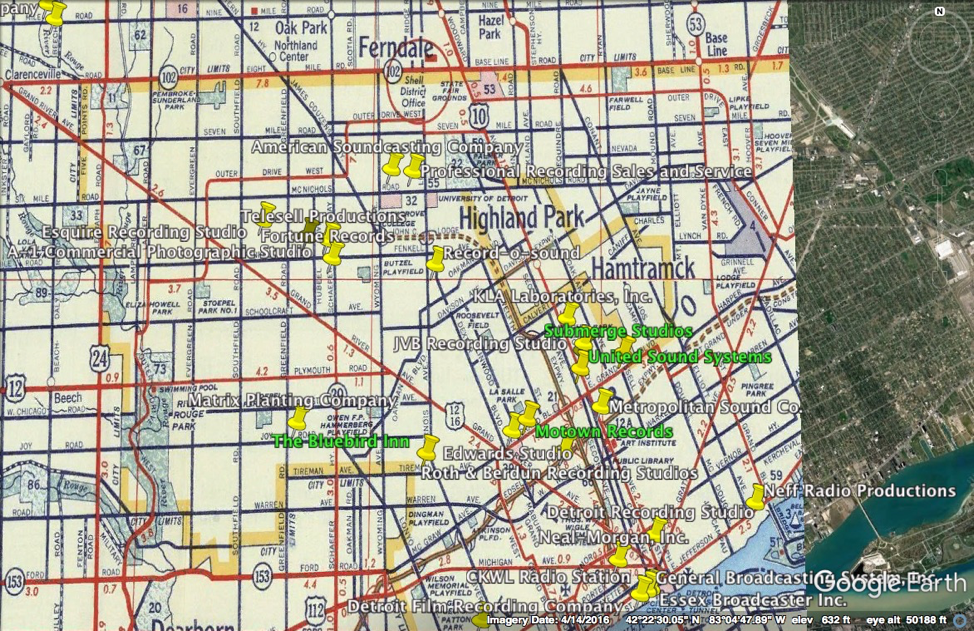To provide observations and information on the emerging fields of landscape scale conservation, heritage preservation, and sustainable community development.
Newsletter
Stay up-to-date with the latest nature, culture and community news.
We won’t spam you or share your information. Newsletters are sent approximately 10 times a year. Unsubscribe at any time.

Virtues of Good Government
In this piece, originally published in the May 2017 issue of the George Wright Forum (vol 34, no 1), guest observer Rolf Diamant explores the

Looking for Detroit’s Urban Landscape: My Experience on the George Wright’s 2016 Park Break
Detroit is a place indelibly marked by the highest highs and the lowest lows of American history. Its crumbling buildings and forgotten factories are the tangible evidence of economic booms and busts, the rise and decline of American manufacturing, and the after-effects of WWII, the Cold War, the Vietnam War, racism and classism, as well as decades of local mismanagement and corruption. It also has a rich urban cultural heritage that is still visible on the landscape, if you look closely enough. Read about one student’s experience seeking this heritage as part of the George Wright Society’s Park Break program, which in 2016 focused on implemtning the National Park Services Urban Agenda.

Featured Voices – Interviews with Landscape Practitioners and Scholars
Last month we added a new element to the Living Landscape Observer – Featured Voices. Going forward, each issue will highlight the work, experiences and perspective of an individual involved in the practice of landscape conservation or the study of large landscapes. Our interviewees will come from academia, the public sector, nonprofit organizations and business- all with the ultimate goal of sharing knowledge and insights into this complex and growing field.

More Than Campfire Conversation
In his most recent Letter from Woodstock long time National Park Service leader Rolf Diamant paints a bigger and more complex picture of the creation of the National Park idea than the fabled Theodore Roosevelt and John Muir camping trip. He asks that we keep before us this broader vision of the National Parks. This will be particularly challenging in the hard times ahead when the temptation will be to retreat into a defensive posture to protect park funding and resources.

Thirtieth Anniversary of the Columbia River Gorge National Scenic Area
Political compromise is unappreciated in our culture of late. It should not be so. Sometimes compromise works. One success story is the conservation of the Columbia Gorge. It stretches for some eighty miles from just east of Portland Oregon through the Cascade Mountains to the open hills beyond. Bipartisan collaboration conserved this majestic landscape.

Virtues of Good Government
In this piece, originally published in the May 2017 issue of the George Wright Forum (vol 34, no 1), guest observer Rolf Diamant explores the

Looking for Detroit’s Urban Landscape: My Experience on the George Wright’s 2016 Park Break
Detroit is a place indelibly marked by the highest highs and the lowest lows of American history. Its crumbling buildings and forgotten factories are the tangible evidence of economic booms and busts, the rise and decline of American manufacturing, and the after-effects of WWII, the Cold War, the Vietnam War, racism and classism, as well as decades of local mismanagement and corruption. It also has a rich urban cultural heritage that is still visible on the landscape, if you look closely enough. Read about one student’s experience seeking this heritage as part of the George Wright Society’s Park Break program, which in 2016 focused on implemtning the National Park Services Urban Agenda.

Featured Voices – Interviews with Landscape Practitioners and Scholars
Last month we added a new element to the Living Landscape Observer – Featured Voices. Going forward, each issue will highlight the work, experiences and perspective of an individual involved in the practice of landscape conservation or the study of large landscapes. Our interviewees will come from academia, the public sector, nonprofit organizations and business- all with the ultimate goal of sharing knowledge and insights into this complex and growing field.

More Than Campfire Conversation
In his most recent Letter from Woodstock long time National Park Service leader Rolf Diamant paints a bigger and more complex picture of the creation of the National Park idea than the fabled Theodore Roosevelt and John Muir camping trip. He asks that we keep before us this broader vision of the National Parks. This will be particularly challenging in the hard times ahead when the temptation will be to retreat into a defensive posture to protect park funding and resources.

Thirtieth Anniversary of the Columbia River Gorge National Scenic Area
Political compromise is unappreciated in our culture of late. It should not be so. Sometimes compromise works. One success story is the conservation of the Columbia Gorge. It stretches for some eighty miles from just east of Portland Oregon through the Cascade Mountains to the open hills beyond. Bipartisan collaboration conserved this majestic landscape.


